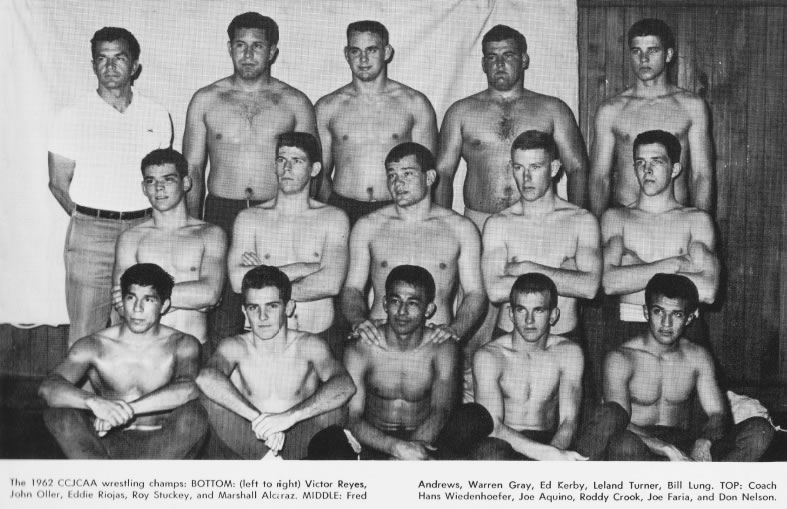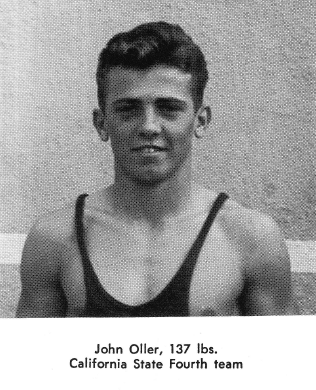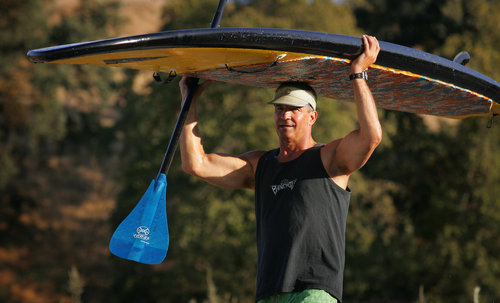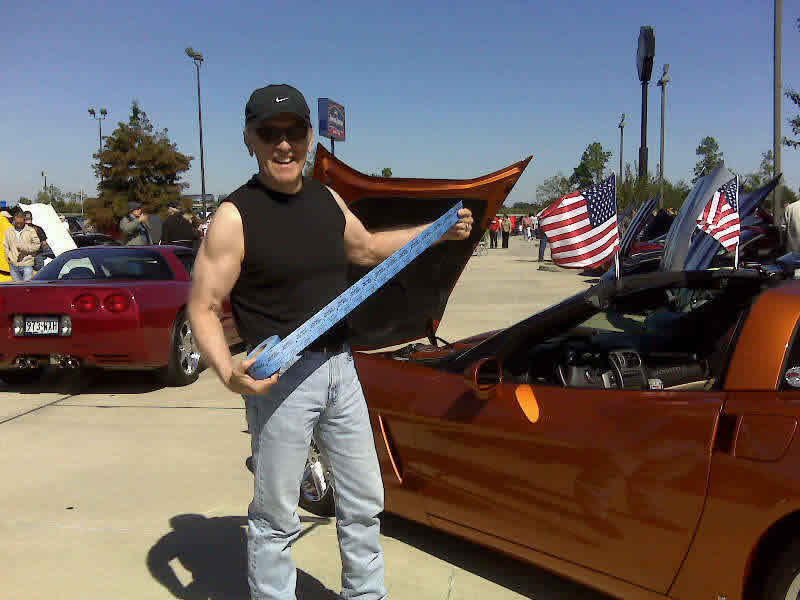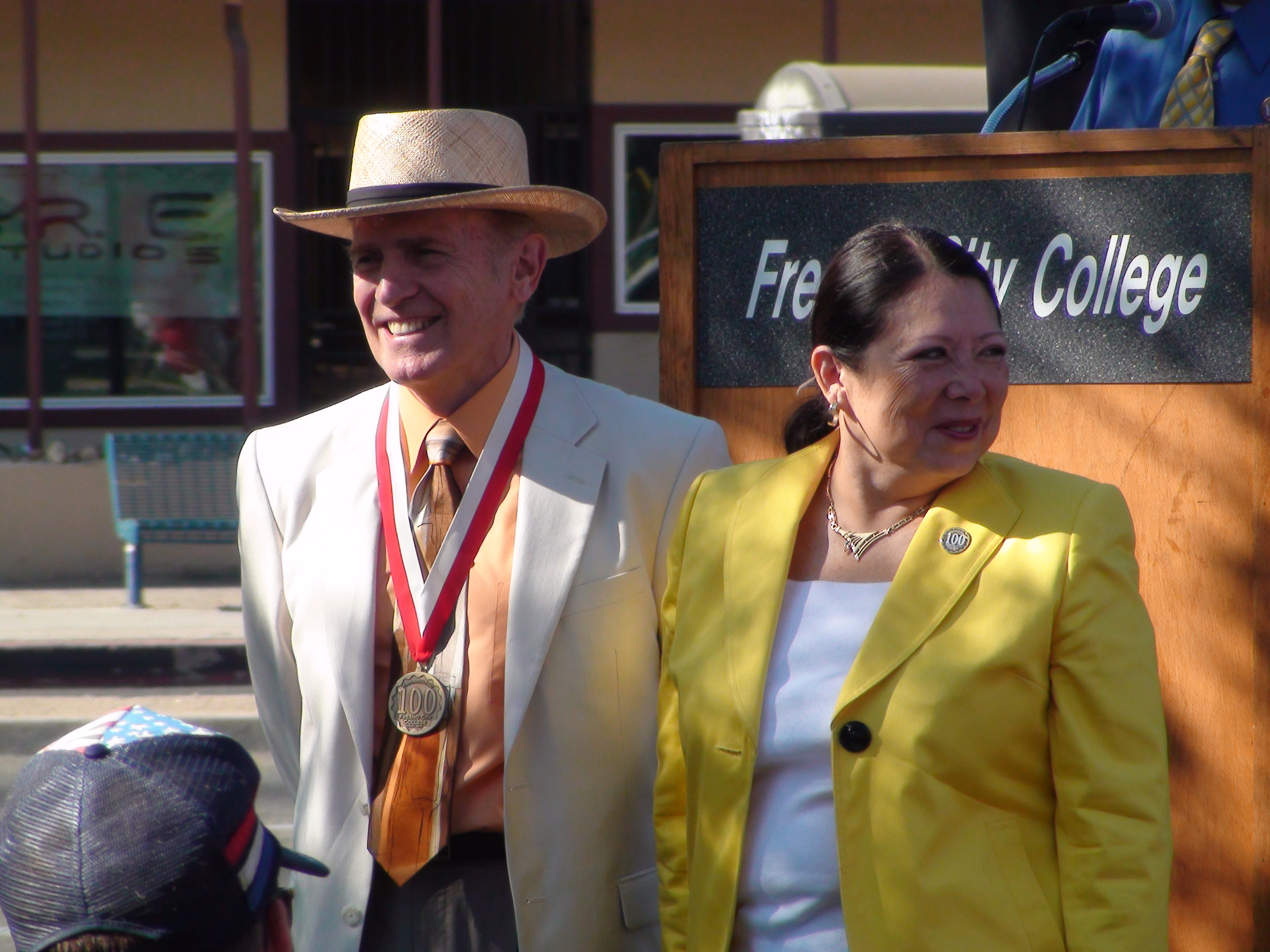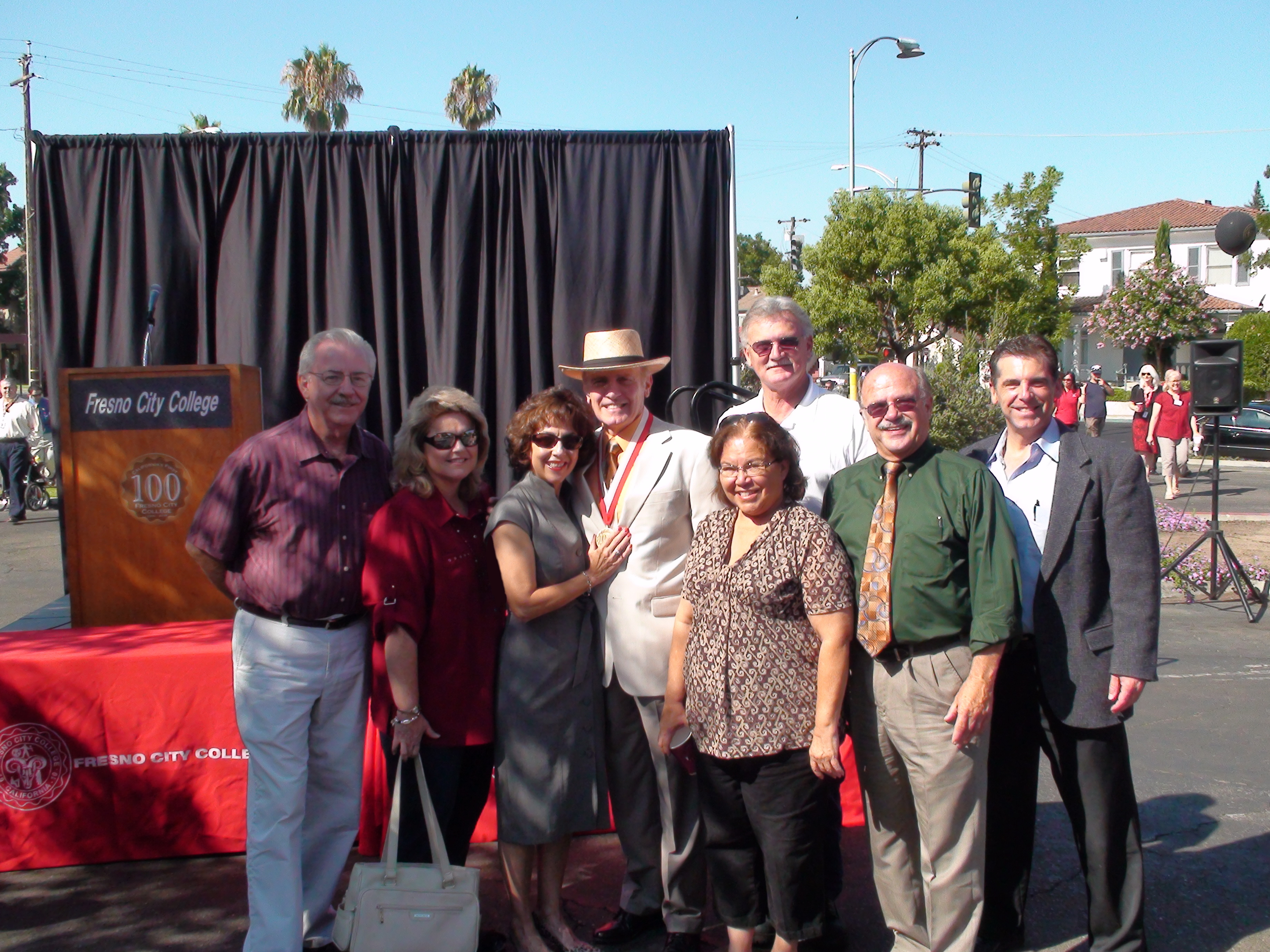What does it take to be a great teacher?
When I think back over the years and ask myself, “how many of the many teachers I have known had a great influence in my life?” only a few come to mind. What made those few teachers stand out? Interestingly, most of the ones who made a difference for me were unlikely suspects. Several of them taught at the Junior College in Fresno, and I didn’t expect to find any folks at that school whom I would count among the greats… but that’s where I met most of them. They were there at good old Fresno City College. At the time when I started out, I’d have preferred to be at Berkeley, Stanford, Davis, or anywhere but Fresno City College. Later I would go on to graduate from what is now the California State University at Fresno. Back then, it was just Fresno State College. Later, I would go on to do a Masters and Ph.D. in General Linguistics at the University of Rochester in New York. The “U of R” was the only privately funded school I ever attended and it was certainly a great place to study. Later still, I became a professor at the University of California at Los Angeles, a California school that competes favorably with MIT, Harvard, Berkeley, Stanford and the other great American Universities. What is interesting in retrospect to me is that the greatest teachers I had were at Fresno City College by a fairly long shot. They were consistently ahead of the ones I met later on in the higher reaches of academia, or “aca-de-mean-ia” as one of the doctoral students at the University of New Mexico once called it.
Well, to return to the central question, what made those few standouts that I met at Fresno City College, the unlikely suspects, what made them great? At the time I didn’t realize how great they were. That realization would not come until later, after I had joined the faculty at UCLA and after that other institutions of higher education working at the doctoral level.
Who were the greats anyway? For one, at the top of my list, there was my college wrestling coach, Hans Wiedenhoefer, Sr. His picture is the one I show here because, as it turned out, I learned more from him in a relatively short time span, in the first couple of weeks of just one season of wrestling, than from all the others. Also, as they say, the proof is in the pudding. He got the results and delivered what he said he could do, and, strangely, he didn’t even seem to be trying hard to do it. He was so casual and matter of fact about it when he told us that we would win the tri-state meet of all the west-coast junior colleges in California, Oregon, and Arizona. There were 52 in California alone, more than in all the rest of the nation put together.
I didn’t see Wiedenhoefer as a great anything at first. He seemed not to be taking it easy, never rushed, but in retrospect he was easily the greatest teacher I ever had (excluding my own father from the field of competitors). He was, also, excluding my dad, the greatest mind and athlete (in my view) that I had the privilege of working with in all my educational experience. At the City College, I also had a great speech teacher who had seen me in a Lion’s Club High School speaking contest who called my dad and said, “I can help your kid.” And he did. My dad took me to Dan Ozier’s house and he worked with me for many nights on my talk about “Complacency: A Danger to America.” We met up again at the City College where Ozier was my speech teacher once again. Then, there was Dr. Just. He was my philosophy teacher who also taught comparative religions. He was the only Ph.D. on the slate of teachers at Fresno City College in academic 1961-1962 when I started college, and he used the simplest and strangest method of teaching I had ever encountered: he would read aloud portions of the textbook and we would underline those passages after which he would talk with us and then move on to the next portion to be underlined. There was also Mrs. Brenneman, my English teacher, who was notoriously difficult to please and had the distinction of being able to wrap her legs around each other and the table leg at the same time… In her class, I once felt compelled to sign one of my papers, “John Oller, NOT Jack London!”, and it did seem to improve her grading for the rest of that semester.
What was it about any of these people that made them great? A few years ago, I was blessed with a Distinguished Educators grant from the Public Service Company of New Mexico to study the traits of teachers that students and teachers at all levels of education value the most. Cutting to the bottom-line, students evaluate teachers for their knowledge of the subject matter first and foremost and equally important, though subordinate to knowledge, they value teachers for caring for the students and the ability to communicate. Enthusiasm is a key feature of communication and compassion is another, but neither means anything unless the teacher knows the subject matter. When you put it all together, the four most important traits all come down to communication. Teaching is just a highly developed form of effective communication, the kind of sharing that John Dewey described as the most “wonderful” of all human affairs.
For all of my university teaching career, something I set out to do when I was in the fifth grade, I have observed teachers. I have tried to become like some of them and to avoid being like others. None influenced me as much as Wiedenhoefer. What was different about his teaching?
For one thing it was individualized. He never did the same things with any student, and yet he was as consistent as could be. He told us all to do certain things on our own, to run two miles everyday, to do 50 neck bridges, to do a couple of sets of 10 chin ups, and to spend a couple of hours at every work-out on the mat. He always taught in context. He would stop the action in progress and suggest, try reaching in here under the arm, and he would then have us resume action. Everything I learned from Wiedenhoefer in practice I could employ in the very next match I wrestled.
To illustrate the kind of teacher he was, I will tell a couple of stories. One of them concerned a young lad named Bill Lung — he is the guy middle row right in the group photo punching out his biceps with his fists. He would go on to a bunch of championships and was one of the best wrestlers I ever saw in my life. But one night at an exhibition match, he behaved like a guy who thought he was the greatest thing since rock and roll. He shimied and danced around on the mat until he lost to an incredibly inferior opponent. Afterward we were in the locker room and he asked me, “Johnny, what went wrong out there?” Before I could answer, our coach walked by and Bill turned to him and said, “Coach, what did I do wrong?” The coach looked him in the eye and said softly, “You went out there acting like ‘the great Bill Lung’.” Then the coach walked on without another word. Bill dropped to the bench like he’d been black-jacked. He turned to me and asked, “Johnny, Did I do that?” I shrugged. What could I say? His life was changed with a single sentence. So was mine. I learned from something from Wiedenhoefer there… I also observed an occasion when a team-mate ran out of steam and later asked the coach what went wrong, the coach just asked, “Are you doing your running?”
Recently, my son Mark sent me the the obituary for Hans Wiedenhoefer. The pictures from the FCC Annual show what Wiedenhoefer looked like when I knew him. The obit reiterated some of the things that I knew about Wiedenhoefer but it left out a couple of things that I will tell here. It mentioned that he was wounded at Iwo Jima. It didn’t say that he was one of the first point men to land on that island where the famous flag raising would later take place. It didn’t tell that all the athletes at Fresno City College were in awe of the 40 year-old Wiedenhoefer who had a more beautiful physique than any athlete at the college. It mentioned his football honors, his being inducted to the Coaches Hall of Fame for his work in wrestling, football, golf, and fencing. It mentioned his interest in history and the fact that he was often a guest lecturer in the classes of historians “Wild Bill” Rumley, a many reported to consume vast quantities of adult liquid and still get up the next day, and Mr. Hendrickson, who looked like a GQ model in his natty suits and loved every event of American History 101. Something I didn’t know that the obit mentioned was that Wiedenhoefer started fencing at age 47 and went on to coach winning teams and to win national senior titles himself. The obit didn’t tell about his being runner-up in the nationals two years running in college wrestling at San Jose State or the fact that he and his whole football team were in Honolulu when the Japanese bombed Pearl Harbor on December 7, 1941. The article did tell of his interest in history and athletics, but there was much more to him.
What I want to focus on here is Wiedenhoefer as a teacher. He knew his subject matter and he could communicate it. I remember one particular incident that was life changing in a special way for me. I did not understand the full significance of it until I read the obituary and then called and talked with his surviving sons, Hans Jr. and Curt, who are now older than their dad was back in the day. I remember when the coach would bring his boys with him. Hans, the elder of the boys, could walk the ladder hand-over-hand where I did my 20 chin ups every work-out. Curt was not up to that yet, but he could hang on the bar. They were two little black haired boys that looked just like their dad. On one particular evening when my father was present for a work-out, as he often was, Wiedenhoefer told him that he could make a champion out of me. I was amazed that he thought so much of me.
About that time a young man came out for the team whom I had known in high school. He had been a Fresno City Champ during my junior year in high school. My dad was there that night, standing in a doorway to a steamy little wrestling room, watching the whole practice and occasionally talking with Wiedenhoefer. The new guy was Walter Whitmore. He had wrestled my older bother and had separated my brother’s shoulder, also, he had beaten my brother more than once in high school. That evening I just did what I had been learning to do from Wiedenhoefer and Walter was putty in my hands. I turned him any which way I liked. Afterwards, he said with a kind of angry look and voice, “I really envy you!” I tried to be calm and friendly in response by just asking innocently, “Why?” I expected him to say something about how badly I had beaten him in practice, but he didn’t. He said, “Because of your dad.”
What did this guy know about my dad? He sighed and then his voice cracked as he said, “My dad has never been to any competition I’ve ever been in. Not in wrestling, not in football, nothing. But your dad even shows up to watch you practice.” Up until then, I am ashamed to say, I kind of resented my dad always being there, looking over my shoulder, offering pointers occasionally, but never again.
That year, under Wiedenhoefer, in my first dual meet I had to wrestle Sam Huerta. Wiedenhoefer didn’t mention till after the match that Huerta was the defending Tri-State Champion in my weight class. The recorded score was a tie, but I scored 1 point and he scored none. He was awarded a point by the referee who claimed that I was stalling, but I never did that in any wrestling match in my life. I always wrestled to the last second. It was Sam who was stalling. Be that as it may, we met twice more that year. He won one and I won one, but the glory was that I beat him in the first dual meet and then in the tri-state tournament. That year I also pinned John Arnold, the winner of the Pacific Coast Internationals. Wiedenhoefer never seemed surprised about the wins, and he shrugged off losses, though he didn’t like them much. That year we won the state just as Wiedenhoefer said we would and he was elected Coach of the Year, but not for the first or last time.
The clincher to the story, in my mind, would come years later. It was the catalyst that precipitated this essay. I have always thought I should write something about the great teachers I have had. Always at the top of my list was Hans Wiedenhoefer. His influence is something I feel around the middle when I sit down. I still go to the gym on a regular basis. Because of him, I weigh now what I did when I finished my last year of college wrestling, but my first year, the one when I had Wiedenhoefer as my coach, was the best. It defined many of my goals as an athlete, student, and teacher.
The following year, Wiedenhoefer accepted a Fulbright to travel to Europe, and I only emember him saying something about visiting relatives and tying up loose ends. But it was not until I talked with his boys by telephone just a few days before writing this essay, that I learned the real reason that Wiedenhoefer went to Europe in 1962-1963. I learned that Hans Wiedenhoefer Sr., never knew his biological German father. Born in Germany, raised in America, Wiedenhoefer was drafted into the Honolulu police force to help maintain order immediately after the bombing of Pearl Harbor, and from there he joined the U. S. Marine Corps to fight in the Pacific never to see any action in Europe. Probably that was a good thing given his German name, but it was not the name of his real father, a man he had never met. His mother had come to America already pregnant with him and later would marry a compassionate German American named Wiedenhoefer.
But the coach, at the age of 41 still longed to find his biological father. He wanted to know, was his real father a supporter or detractor of the Nazis? What became of him during or after the war?I got some more of the backstory in 2010 from Hans Wiedenhoefer Jr. at the celebration of the FCC Centennial where Hans Sr. was honored. Hans Jr. told me that during the Fullbright sabbatical of 1962-63 that his dad spent in Germany, Hans Sr. had tracked down a certain prominent German who was probably his real biological father. But the story took an unexpected turn in the end. The day my coach planned to speak with his biological dad, he drove early to the address where he knew the man in question lived. He parked his rented car at a distance to think through the meeting about to take place. As he was reflecting on what to do and say, a couple of other cars arrived in a hurry and parked in front of the house. Occupants ran to the house and he could see a woman at the door of the house letting them in. Then, an ambulance arrived, and things slowed down. In a little while, the body of a man was carried from the house on a stretcher. Later, Hans Sr. would confirm the identity of the deceased whom he believed was his biological father. The pressing questions for his father about the war and about Hans Sr.’s Germanic roots were to remain in the not so distant past, forever unknown to my coach. Now, however, I understood Wiedenhoefer’s commitment to go the Germany that year. The story his son, Hans Jr., told me in the summer of 2010, also explained why Hans Sr. studied the history of WWII. (For more on that, see the book review about the 2016 edition of Wounded Tiger.)
What has stayed with me about Wiedenhoefer besides his understanding of the subject-matter and skills he imparted to me, besides the fact that he knew how to turn my weaknesses into strengths and to make my own strengths almost unbeatable, was a simple sentence that I have tried to pass along to my own children and grandchildren and to my own students. That night when I unknowingly faced the defending champion, Sam Huerta in my first official college wrestling match, he only told me one thing. He said, “Just do what you know how to do.”
The rest of the story would have to lead to the students and/or colleagues I have worked alongside of and what they have accomplished. I would tell of Bruce Dennis Sales, Jiro Igarashi, Elcho Z. Redding, Marianne Celce-Murcia, Stephen D. Krashen, Richard F. Walker, Patricia Richard-Amato, Carolyn Kennedy, Jack S. Damico, Tatsuo Taira, Tetsuro Chihara, Michael Guerrero, Liang Chen, Ning Pan, Ruixia Yan, and the tale is not yet at its conclusion. I hope and believe that my students will say that I have made a difference in their lives for the better. As for me, the books are still open and the lights are still on… I have much more to learn and to write and I am thankful for every student who comes my way.
Post Script
Today is August 17, 2010 and another semester begins tomorrow here at the University of Louisiana. Several years have passed since I wrote the preceding “Essay on Teaching.” I sat down to write it at PJ’s Coffee Shop across from the main UL campus on one of those days when it seems that even your best friend has deserted the angels to join up with the other guys. I just decided then and there that I would reflect on the grace, the unflagging love, the loyalty and competence, the beliefs and hopes that a few great teachers gave to me. Wiedenhoefer’s words “do what you know how to do” came back to me that day as they have again and again over the years.
I never dreamed when I began to write that little essay how it would impact the lives of others, much less my own. The first responses to it came from my sons, Mark Louis Oller and Stephen David Oller, and from a participant in the international conference on autism that I organized (with the help of Sertoma and ASAC) in the spring of 2007. They found the essay “inspiring.” Dr. Michael Glabus, then, Director of the Laboratory of Biological Psychiatry Department of Psychiatry, School of Medicine, at Louisiana State University in Alexandria, wrote to say, “I thought the conference was superb. My opinion has changed radically on the whole issue of mercury and autism thanks to what I learned. By the way, I really enjoyed reading your essay on teaching at your web-page. Very inspiring!” He gave me written permission to quote him. In rare moments of gloom, I recurred to those early comments as points of light shining through.
Then, just a few months ago, one of the organizers of the Fresno City College Centennial Celebration, Mr. Ernie Garcia, wrote to ask two things: Would I be willing to have my essay published in the book they were preparing for the Centennial and would I be willing to nominate Hans Wiedenhoefer as one of the honorees for what they were calling “100 Stars for 100 Years.”
Would I ever! Sure. He said that the College President, Dr. Cynthia Azari “thinks a condensed version of your essay would be a perfect fit.” On the same day that I heard from Ernie Garcia, I also received an email from Gurdeep Sihota He’Bert, the Executive Director of the Foundation for the California State Center Community College District. She wrote, “I just wanted to say “THANK YOU” for writing such an outstanding essay! As a proud Fresno City College Graduate, I totally agree with you about the absolutely wonderful instructors at FCC!!”
Without delay I did nominate Wiedenhoefer to be one of the “100 Stars for 100 Years” and in the course of doing so I learned that Fresno City College was the first of the 108 junior colleges of California and the second one established in the whole United States. I knew that when I was competing in the “State Wrestling Tournament” (actually a tri-state west coast affair including Arizona and Oregon) in 1961-1962 there were 52 junior colleges in Caifornia alone, more than in all the rest of the nation combined. Just estimating, with 1600 faculty and staff at FCC in 2010 and over 25,000 students, in 100 years there have probably been somewhere in the neighborhood of 1.5 to 2 million students and faculty associated with the college during the last 100 years. Therefore, if Wiedenhoefer were selected as one of the honorees, it would be a significant honor in my thinking.
Ernie Garcia had also mentioned in his email that Dan Ozier, the former tennis coach at FCC and one of the great teachers I had singled out in my essay had already been selected as one of the 100 Stars. I have to add another story about Ozier who was also, as I learned during my time at the City College, an admirer and friend of Wiedenhoefer. After Ozier judged that Lions Club speech contest that I won only because the other competitors performed even worse than I had, he got in touch with my dad. During the following months Ozier became a virtual family member. On one occasion, during my senior year in high school, my dad, Ozier, and I were guests at an Optimists Club function honoring my older brother Randy as one of Roosevelt High’s returning Foreign Exchange Students from 1959-1960. In his opening remarks, the Optimists’ host mentioned that the club was glad to provide the meal to family members and asked Randy to please stand up and introduce his family guests. That was the night that Dan Ozier was formally inducted into the Oller family. Randy introduced his dad, John Oller, Sr., his brother, John Oller, Jr., and hesitated for only about half a second on Ozier’s introduction before saying, “And this is my Uncle, Dan Ozier.” Ozier smiled impishly to the Ollers and all of us referred to him as “Uncle Dan” ever after. During my high school years Randy and I took the Ozier boys, Nick (about 6 then), Dix (about 5), and Joe (almost too little to go) on horseback rides out on the west side of Fresno near West Dudley and North Valentine where we had our humble (no kidding) abode. My brother Randy and I both took Ozier’s introduction to speech communication at FCC. Imagine my delight, therefore, when Ernie Garcia said that he had stumbled upon my essay when googling Dan Ozier. All of this background just made it that much more fun to be invited to nominate Hans Wiedenhoefer.
Then, just a few weeks ago, when my wife and I were on our way to see Red Rock Canyon outside of Las Vegas, Nevada, I got a call from the FCC Public Information Office. This time it was from Kathy Bonilla. After a bit of phone tag, I stepped out of the Denny’s restaurant where my wife and I were waiting on our breakfast order (yes, what can I say, nothing but the best in food and ice water) and called the FCC Public Information Office. I had asked if the call was about the essay, but she said no. She was calling to tell me that on the basis of my academic record I had been selected as one of the “100 Stars for 100 Years.” When I got my voice back I asked if the Wiedenhoefer nomination had been accepted, and she said it had, that his boys, Hans Jr. and Curt would receive the award for their dad and that Joe Ozier had already received the medalion on behalf of “Uncle” Dan, on March 16, 2010.
When I went back into the restaurant and reported the conversation to my wife, Mary Anne, we committed to make the trip to Fresno just a week ago to receive the award on August 11, 2010. There we learned the organizers had saved the best for the last. Hans Wiedenhoefer Sr., my coach and teacher, was honored at the grand finale as the 100th of the “100 Stars for 100 Years.” As a wrestler and coach of wrestling, he was inducted into the National Wrestling Hall of Fame & Museum in 2003. In 1999, he had already been inducted into the California Coaches Hall of Fame for football. In the national Hall of Fame Guide, as a player/wrestler, he is listed in wrestling for 1946 and football in 1947. Weidenhoefer’s sons, Hans Jr. and Curt went on to establish themselves as world-class champions and decorated competitors in football and wrestling. His words, enthusiasm, and charismatic presence can still be felt in them and in those who knew him. Memorable moments were shared with Hans Jr. (see the picture just below) who came to meet me and the family and friends who joined in the celebration. My son Mark, who lives in Fresno, was there with Hans Jr., as were my brother Stuart B. Oller (bear hunter), my sister Victoria Oller Rail (first grade teacher and author) along with her husband and my life-long best friend, DeWayne Rail (a distinguished poet and long-time teacher at FCC), my wife’s sister Becky Chavez Evans, her husband, Dr. Mark Evans (a Dean at California State University at Bakersfield), and my cousin, Barbara White (Fresno resident and administrator with the Social Security Administration).
This is me with Hans Wiedenhoefer, Jr. and just below the picture of us together is one of Hans, Jr. carrying a standup paddle board down to the San Joaquin River the day before (August 10, 2010) the medallion ceremony where he and I met for the first time ever. Next after him and his paddle board is a picture of me at an autism fundraiser put on by the Autism Society of Acadiana and the regional Corvette associaton (members of the Sertoma Club of Lafayette also served food). No, I don’t own the burnt orange Corvette I am standing by but I wouldn’t mind if I did. I was selling raffle tickets at that event to raise money for the treatment of autism (October 17, 2009).
Can you see the lasting influence of Hans Wiedenhoefer Sr. on both Hans Jr. (top) and me (next one down)?
The next picture is me with the President of Fresno City College, Dr. Cynthia Azari, at the medallion ceremony.
Then, the last picture below is of my family members who were able to be present for the ceremony from left to right: DeWayne Rail, Victoria (Tori) Oller Rail (my youngest of three sisters), Mary Anne Chavez Oller (my wife), Becky Chavez Evans (Mary Anne’s sister), Stuart B. Oller (my brother, one of four), Mark Evans (Becky’s husband), and Mark Louis Oller (my son, eldest of four).
*Any errors and the ideas expressed here are solely those of the webmaster of this site. Contact joller@bellsouth.net. Most recently updated May 12, 2015.

